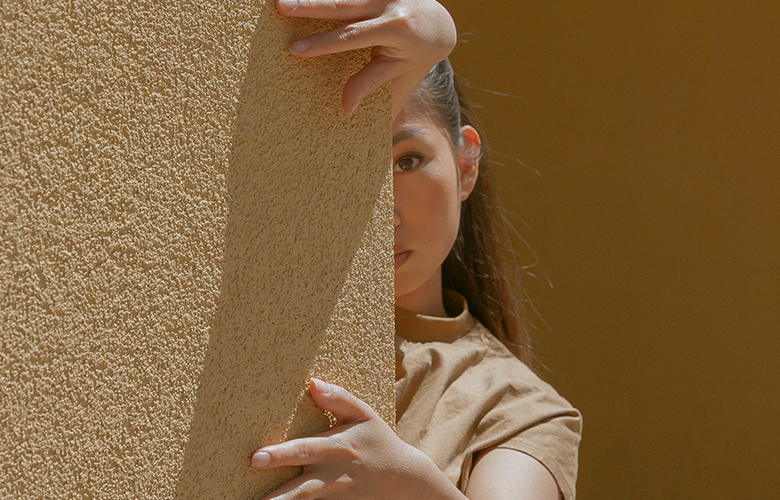
I look at the recent trends in Covid-19 theatre as a search for ‘Live’-ness. The concept of liveness takes from the word of experiencing a performance ‘Live’. This entails with the experience having to be immediate, to be in-person to experience the thing being performed. Most of the performing arts predicates on an audience member encountering the artwork in person. A theatre/dance piece is staged and blocked for where an audience sits, and even for music acts, the sound engineer takes into account the equalising of the sound for a curated experience of the music. The value of liveness is that it is the linchpin of the performing arts, and with Covid-19 unpinning that, the world is a tumble. A lot of us are now searching for new ways to make meaning with our craft, with the skills that promote and thrive on immediacy and liveness.
What Covid-19 has also shown is the redundancy of architecture; when there is no one to populate those spaces – theatres, cinemas, bars – the craft of performing live must now make meaning to no one in-person. This is a humbling return to theatre’s religious roots, that an act of theatre only needs one person performing, whether or not there is anyone watching. Augusto Boal’s “invisible theatre” of actors engaging with audiences without institutional frameworks might seem relevant about now.
In Singapore, we are now seeing our government divorce the Arts in times of crisis, surgically removing benign attachments to its budget for survival. The year-end 2019 closure of Centre 42, a home ground to many a group, the Intercultural Theatre Institute (ITI) moving out from its home in Emily Hill, The Necessary Stage’s eviction from its home of 20 years in Marine Parade Community Center, and now also The Substation whose shut-down for renovations will see a return to more restricted spaces due to new arts housing schemes. Collectively, these indicate a change in governmental attitudes towards the Arts or maybe an uncovering of their inherent prejudice towards it.
In the shrinking of spaces for the Arts, I wonder if the Singapore government sees this all as unnecessary bloat. It has been barely one year since the opening of Wild Rice’s new theatre in Funan Mall, a landmark event of a theatre solely owned by a theatre company, a home of their own making. To be suddenly plagued by mould through disuse, during this period, feels distressingly like pathetic fallacy to create space for live art, or unfortunate symbolism.
My gripe with digital theatre is that the gaze is directed. Even in Hamilton, there are multiple cameras to create energy on the screen, with faster cuts and panning shots. The pros are that only the good parts are shown, and you are privy to closeups on emotional performances. You basically get the expensive ticketed seats in theatre. However, this for me is the basis of a general film, which is why I’ve always found it hard to watch the National Theatre Live broadcasts. I can only watch what they want me to look at.
Zoom theatre also looks to be a natural extension of interdisciplinary work, a hybrid or a more pure format of liveness through technological mediums. Poor Thing by The Necessary Stage already broke ground here in Singapore with live chat and polls to the audience to spice up the liveness of theatre. The recent screening of big hit ‘Emily of Emerald Hill’ by Wild Rice during the Circuit Breaker (CB) period saw much more activity in the live chat/commentary on YouTube, with audience members interacting with each other and engaging with the performance, all with the tongue-in-cheek fervour of twitter. Dare I say, I found it much more entertaining than the screened show.
Theatre’s liveness, be it the communal aspect of being in the midst of other human beings and other bodies in space, or the audience’s chase of that ephemeral experience of being achingly alive and present – a wondrous soundscape from a concert, or an overwhelming immersiveness in a story. These elements are intrinsic to certain performing arts. That liveness cannot be uncoupled from those art forms. Dance shows, concert halls and live music, all emphasise the inherent liveness of being, of the performer and the audience member. Those performances are something that can only be experienced once, and if you blink you miss it.
Cinema is facing a different set of difficulties, to a lesser extent of the performing arts. Film and its migration to online streaming platforms is blurring that line between the initial communal liveness of cinema to a singular solitary experience of the film. It should come at no surprise that in 2018, Netflix was outrightly rejected by the Cannes Film Festival, who issued a ban for films competing for prestigious awards in the festival unless they secure a local theatrical release. Given the current circumstances, it would make more sense for Cannes to revise their opinion on this. The communal experience is coded in cinema’s DNA.
This brings us to the central predicament. The present state of things exposes the inequality of engagement in the performing arts. This is unavoidable since Covid-19 looms like the boogeyman in all our interactions with Art. The main delineating feature between the haves and the have-nots is the strength and quality of your technological equipment (inclusive of wifi). What this has done is stratified and gentrified ‘performing anything’ even further.
There have been some attempts by theatre companies to democratise this with low ticket prices and videos that are free-to-stream online. This is with the assumption that everyone has a smartphone/laptop/PC capable of watching and engaging with the performance. However, this is not sustainable in the long run, not for the companies and not for audiences.
Artists are scraping by, at least those lucky enough to get hold of the gold pot of government grants called the Self-employed person Income Relief Scheme (SIRS), which is a comfortable sum, only if you get the full amount. Otherwise, they are conducting workshops (the only thing allowed in Phase 2), or reskilling or upskilling themselves in online learning platforms, or have had their work digitalised with the Digital Presentation Grant for the Arts (DPG) that the National Arts Council provides. The grants are substantial but not all fall so neatly into the categories provided, and some are denied the help they deserve.
For music, almost all band work has stagnated. For bands, their primary source of income is the sale of liveness; after launching an album, their income comes not just from merchandise sales but the gig circuit. And with the current hibernation (and in some cases, dissolution) of the Asian gig circuit, our musicians too have been left to flounder.
Of all the people within the performing arts, I do feel that the dancers, stage crew and designers of the performing arts have been hit the hardest. Besides the dancers, for the stage crew and designers, a large part of their practice is supporting the architecture of liveness and performing live. The architecture that I refer to are the performance spaces, the buildings, the backstage work, the conceptualisation of space, both literally and figuratively for set, light and sound designers.
Recently, the government is looking at opening up in a Phase 3, we are currently at Phase 2, which is – no live entertainment and restricted capacity events. I believe the performing arts will be the last to be given that leeway. Events up to 50 people are only for business-oriented events. In the realm of entertainment, cinemas are allowed to seat up to 50 patrons as well, but who wants to open up new films now in cinema when everyone has been pushing releases back until next year?
Bar the current trends, if and when our new normal descends upon us. I forecast that it would be 10 – 50 audience members per live show, at a significantly pricier ticket range, above and beyond what you want normally pay for seats pre-covid, in which you pay for the privilege of liveness. While, screened theatre tickets are available at a heavily discounted rate for volume and democratisation of access.
Of course, connection however tenuous is worth something. It is bravery to reach out in whatever format, when we are at the most disengaged and isolated point of our lives. In just these few prime examples from my life, I see this courage time and time again, from dancers reacting to .gif’s new album aptly named Hail Nothing through Instagram (IG), other actors turning to voice-over work, ads and conducting online workshops, while musicians try to jam over Facebook Live/Google Hangouts/Skype/Zoom and also pushing themselves to engage with their fans in a directly vocal and textual fashion.
The architecture was made to house our liveness and we thought that by putting it on a pedestal, the liveness was made sacred. When we were evicted, we thought we lost that. However, the liveness was innately sacred. No brick and stone house can honour that, because the body already houses the liveness, our own liveness.
Recently, one of the few dancers I know, posted a video of her dancing in her living room in response to her recent pregnancy and the changes in her body. Even though we were all a few degrees removed from the performance, it was nice to partake in a sliver of that moment, however muted it was. I knew she wasn’t really dancing for anyone on her Facebook feed, but for herself and her unborn baby, and I thought how apt a symbol of hope for the future in this time.
Singlish: Finding Our Tongue in Singapore


13+ years with robust experience in various industries such as theatre, TV, finance and civil service, with experience in directing, scriptwriting, production management, and copywriting. Core Member and Founder of Dark Matter Theatrics, which aims to engage people from all walks of life with honest and impactful storytelling. Published writer in prose, poetry and theatre plays. Currently, breaking into screenwriting for TV and film. Experienced in online and print media, in identifying lifestyle trends and developing interesting story angles. My creative work is primarily concerned with human dignity, new myth and the negative imagination.
Read Full Profile© 2021 TheatreArtLife. All rights reserved.

Thank you so much for reading, but you have now reached your free article limit for this month.
Our contributors are currently writing more articles for you to enjoy.
To keep reading, all you have to do is become a subscriber and then you can read unlimited articles anytime.
Your investment will help us continue to ignite connections across the globe in live entertainment and build this community for industry professionals.